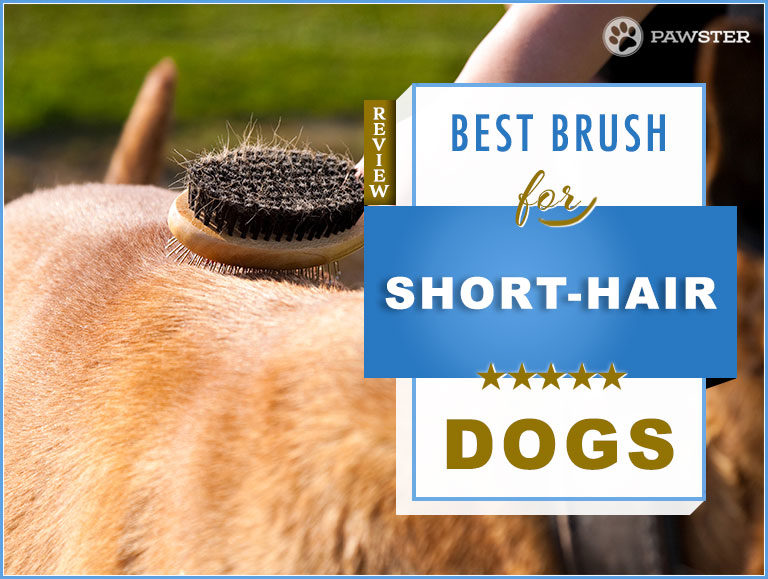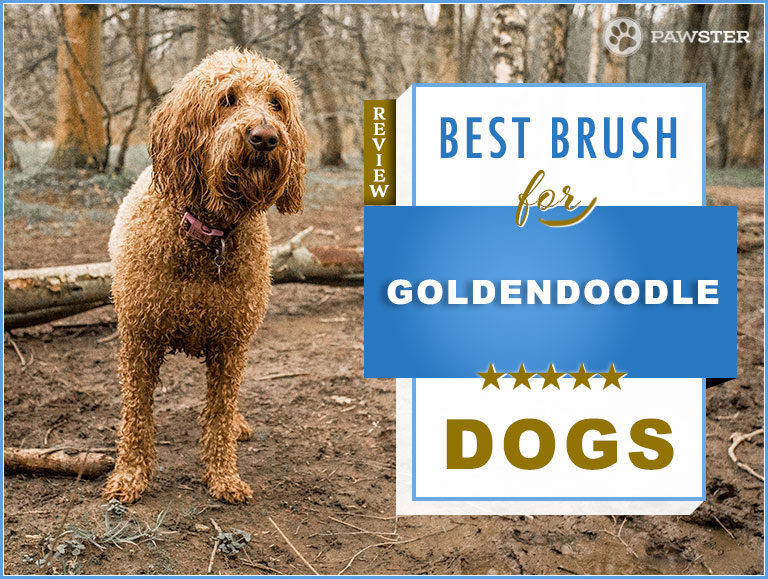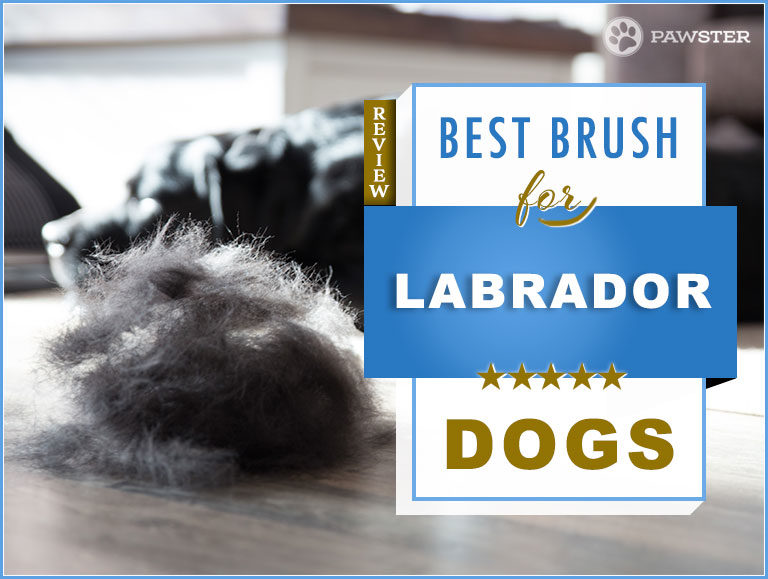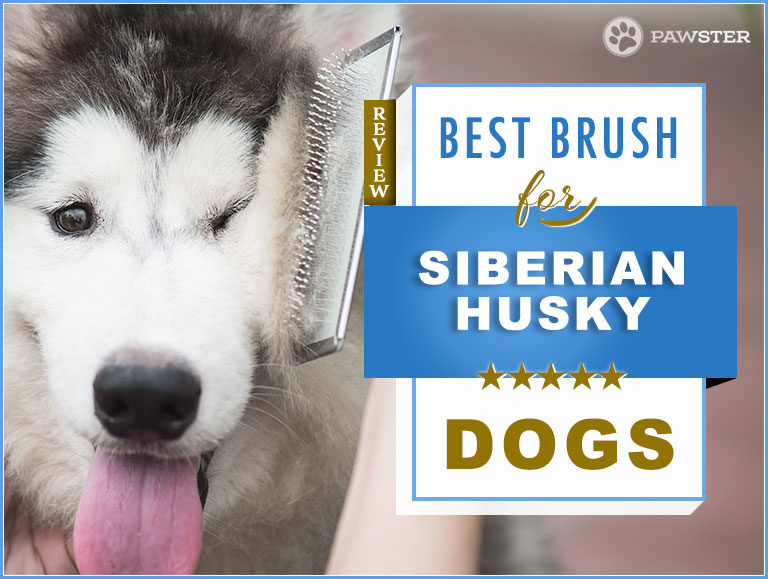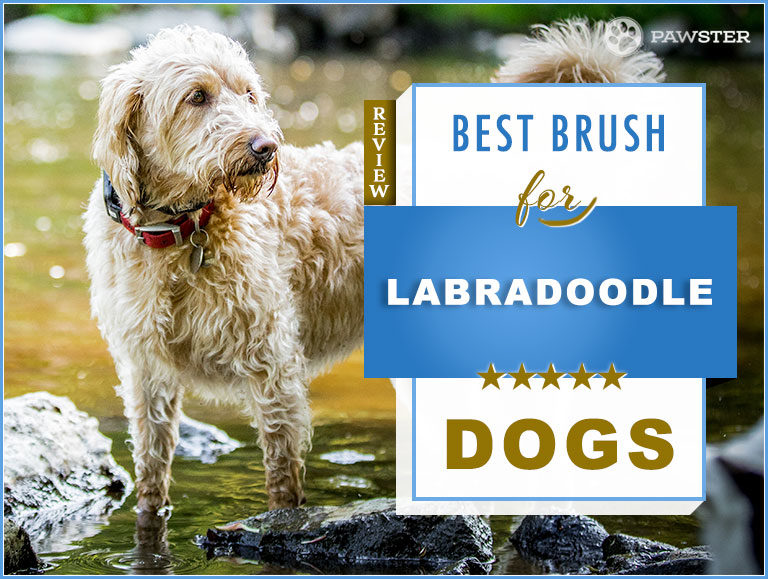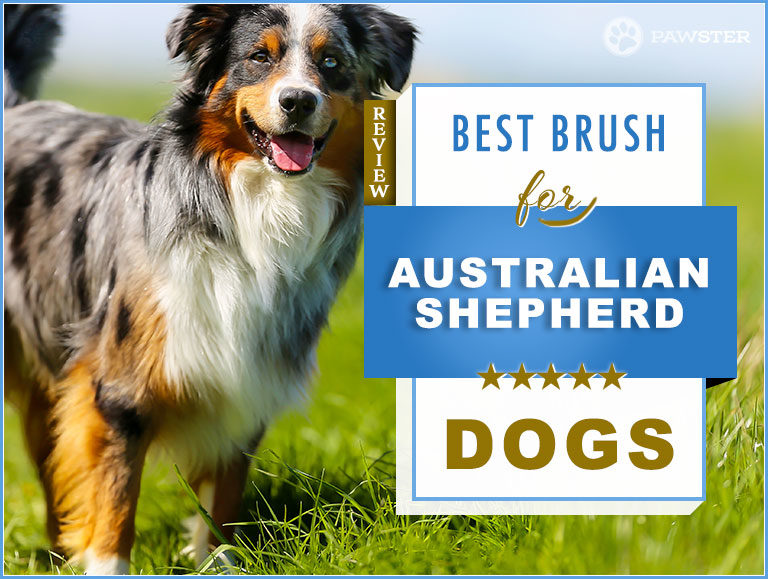Best Dog Brush for Mastiffs : 2024 Picks for Mastiff Dog Brushes
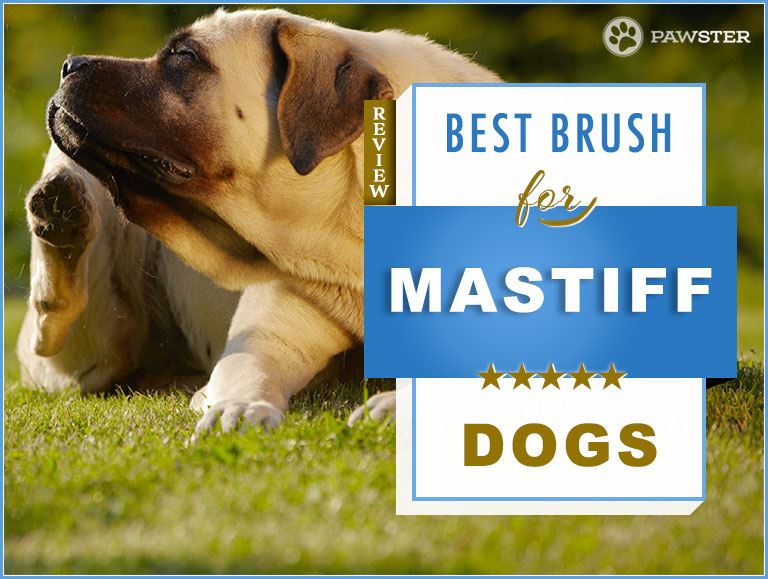
Contents of Article
- Different Popular Brush Types for Mastiffs
- What is the Best Brush for a Mastiff?
- Understanding your Mastiff’s Coat
- Overall Best Brush for a Mastiff – Oster Combination 2-in-1 Dog Brush
- Best Mastiff Matted Hair Brush – Hartz Groomer’s Best Slicker Brush
- 3 More Top Rated Brushes for Mastiffs
- Tips on Brushing your Mastiff’s Coat
- FAQ
- Final Thoughts on Brushes for Your Mastiff
Are you on the market for a Mastiff brush? If so, you’ve probably seen a lot of different brushes and don’t know where to start.
Thankfully, we’ve compiled a list of the best Mastiff brushes along with a comprehensive guide to understanding your Mastiff’s coat. Let’s jump into it!
Different Popular Brush Types for Mastiffs
There are a ton of different brushes on the market, and it can be tough to tell which is the best brush for a Mastiff. Matters get a little more complicated when you consider the variety of coat types a Mastiff could have (more on this in the next section).
What is the Best Brush for a Mastiff?
Ahead, we’ll take a look at the popular Mastiff brush options you have, and which one is the best fit for your dog’s specific coat.
Bristle Brush
Bristle brushes are best for cleaning and shining the coat of a short-haired mastiff. They don’t work as well on Mastiffs with longer coats because they don’t penetrate deep into the undercoat to remove all of the dead fur.
A bristle brush is characterized as a square or circular brush with thin, fine bristles. These brushes will feel like a bit of a massage to your Mastiff, so you won’t have too much of an issue getting them to stand still for a brushing session.
While this Mastiff brush type is probably best for short-haired dogs, it won’t work well if your Mastiff is a breed with a long coat. In these cases, you should look at a pin brush, undercoat rake, or slicker brush.
Slicker Brush
A slicker brush, in some ways, is the opposite of a bristle brush. This Mastiff brush type is better for dogs with long hair rather than short hair. This is because the brush can dig deep and get the knots and mats out of your Mastiff’s coat. A Mastiff slicker brush is always a good purchase if your dog is prone to matting.
These brushes have thin wires attached and usually come on a square surface. They help separate the hair of your dog to remove any mats that might be lurking. When you combine these with an undercoat rake, a long-haired dog will be happy and mat-free.
As a word of caution: never use too much pressure with a slicker brush. These pins can be sharp and will scratch your Mastiff if you’re not careful.
Pin Brush
A pin brush for a dog will look like a traditional brush that we humans use. They have an oval base with spaced-out pins. The pins will likely have plastic tips on them as well.
Pin brushes are one of the brushes that you can use on both short and long-haired Mastiffs. They help separate hair and remove dead fur without digging too deep or irritating the skin.
These brushes are usually the jack of all trades but the master of none. They can smooth out your dog’s coat and get rid of some tangles, but it isn’t the best at anything. Still, it’s a good idea to have a pin brush around for general use.
Undercoat Rake
You probably won’t need an undercoat rake for Mastiffs with short hair, but you will need one if the coat is long and wavy. As the name suggests, undercoat rakes dig deep into your dog’s undercoat to remove dead fur and bring it to the surface.
An undercoat rake is one of the best ways to prevent your dog from getting mats in the first place. Instead of letting the dead hair pile up, you’ll be eradicating it before it can turn into tangles.
These brushes look a lot like a razor in shape. They have thicker, teeth-like pins that dig into your dog’s thick topcoat to the undercoat underneath. Like slicker brushes, be careful that you don’t use too much pressure and scratch your dog.
Rubber Brushes
Rubber brushes, like bristle brushes, are far better for Mastiffs with shorter coats. They have the benefit of being comfortable for your dog while removing much of the dead hair that piles up on top of their coat. It’s best to use such brushes after a bath to get the most out of them.
A rubber brush will have short, rubber bristles that trap fur. They can be a bit difficult to lean, and you might need to run them under some water. They are also known to trap bacteria and can be prone to mold if you don’t properly clean them.
Buying a rubber brush is a great idea if you have a short-haired Mastiff, but breeds with longer hair will need different tools. If you use one on a long-haired Mastiff, you risk pulling and tugging at their coat. You’ll also miss much of the dead fur trapped under the surface.
Understanding your Mastiff’s Coat
Before we look at the best dog brush for a Mastiff, it’s essential that you get a grasp of your Mastiff’s coat. Most people think of an English Mastiff when they think of the breed, but there are all kinds of different breeds that fall into the category.
Each breed has a different coat, and each coat requires different tools. Now that we’ve covered some of the popular Mastiff brush options you have, we’ll go over the different coats so you can learn more about which brush is best for your Mastiff.
Top Coat and Undercoat
Since this is the case, your Mastiff is going to shed more frequently when the seasons change – regardless of whether it has long or short hair. This is when you really need to stay on top of your brushing routine, or else mats will start to develop, and dead fur will be strewn about your home.
Short Hair
Most of the Mastiff breeds have short coats that don’t require too much maintenance. They still shed frequently, but they won’t become knotted and matted the way other coats can. You’ll need to brush short-haired Mastiffs a few times per week – even daily if possible, but they aren’t as high-maintenance as some other breeds.
We recommend using bristle or rubber brushes on Mastiffs with short hair. These brushes will remove enough dead fur to prevent excess shedding without risking irritation to your Mastiff. Stay away from slicker brushes and undercoat rakes if you can.
Long Hair
Although most people think of Bullmastiffs and English Mastiffs – short-haired breeds – when they think of a Mastiff, there are a ton of different Mastiff breeds out there. Many of these breeds have long hair, so you’ll want to take a different approach when it comes to grooming and brushing.
Long-haired dogs shed more frequently than Mastiffs with short hair, so you’ll need to keep a regular brushing regimen. We recommend brushing them daily if possible. This will prevent mats from forming and reduce the amount of hair you find lying around.
You should look at pin brushes, slicker brushes, and undercoat rakes for Mastiffs with long hair. These tools will help get rid of the fur trapped beneath their top coat, as well as any mats or tangles it may have caused.
| Our 2024 Picks: Best Dog Brush for Mastiffs | |||
| Rank | Dog Brush | Price | Rating |
| Top Choice |
 |
$ |
A+
|
|
#2 |
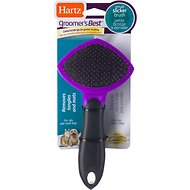 |
$ |
A+
|
|
#3 |
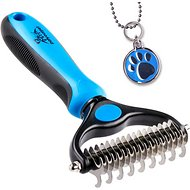 |
$$ |
A
|
|
#4 |
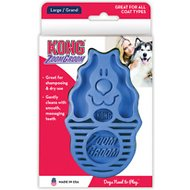 |
$ |
A
|
|
#5 |
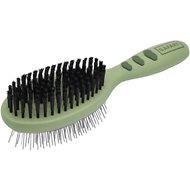 |
$ |
A-
|
Overall Best Brush for a Mastiff – Oster Combination 2-in-1 Dog Brush
Key Features:
- 2-in-1 pin and bristle brush
- Comfortable grip
- Gentle on skin
The Oster Combination 2-in-1 Dog Brush is our number-one top brush for a Mastiff. It will work well whether your Mastiff has short or long hair, though owners of short-haired Mastiffs will probably prefer it.
Short-haired Mastiff owners will have everything they need here. There’s a pin brush to get out the few tangles, and soft bristles to give the coat a sleek, clean look. Those with long-haired Mastiffs will need a few other tools, however.
- Both a bristle and pin brush in one product
- Comfortable for you and your dog
- Durable design
- Difficult to clean
- Better for short-haired Mastiffs
Best Mastiff Matted Hair Brush – Hartz Groomer’s Best Slicker Brush
Key Features:
- Gentle
- Removes mats
- Good for everyday use
- Ergonomic handle
The Hartz Groomer’s Best Slicker Brush is a great Mastiff matting brush because it digs deep without harming your dog’s skin. Even long-haired Mastiffs don’t have coats as thick as some other dogs, so regular slicker brushes can cause scratching. This one is gentle, which is why it’s our top pick.
- Great for matted hair
- Gentle on skin
- Comfortable to use
- Can be difficult to clean
- Better for long-haired Mastiffs.
3 More Top Rated Brushes for Mastiffs
Pat Your Pet Two-Sided Undercoat Rake
Key Features:
- Two-sided
- Rounded teeth
- Good for large breeds
- Durable
The Pat Your Pet Two-Sided Undercoat Rake is the best brush for a Mastiff in the undercoat rake category. It has two sides of teeth for touch mats, so you won’t have trouble getting out dead fur from some of the longer-haired Mastiff breeds.
The tool is both durable and easy to clean, making it a no-brainer if you’re on the market for a quality undercoat rake.
- Easy to clean
- Great for getting out knots
- Picks up hair as it brushes
- Can irritate skin if you’re not careful
- Only good for long-haired Mastiffs
KONG Dog ZoomGroom Multi-Use Brush
Key Features:
- 2-in-1 grooming/massage tool
- Great for the bath
- Made in the USA
- Attracts loose hair
The KONG Dog ZoomGroom Multi-Use Brush is great for Mastiffs with shorter hair. It will get rid of any dead fur without irritating their skin. This tool attracts to hair like glue, especially if you use it right after you give you Mastiff a bath. We highly recommend the KONG for owners of short-haired Mastiffs.
- Great for short-haired Mastiffs
- Gentle and comfortable to use
- Comes in multiple sizes
- Can be difficult to clean
- Not good for long-haired Mastiffs
Safari Combo Brush for Dogs
Key Features:
- Durable wooden handle
- 2-in-1 tool
- Great for all coat types
The Safari Combo Brush for Dogs is another combination bristle and pin brush that makes our rankings. This brush is straightforward and gives you the best of both worlds. You can keep your dog’s coat clean and mat-free with the pin side and give them a smooth finish with the bristle brush.
- Good for both long and short-haired Mastiffs
- Comfortable to use
- Gentle on skin
- Difficult to clean
- Some users reported durability concerns on pin side.
Tips on Brushing your Mastiff’s Coat
Now that we’ve given you our pick for the best brush for a Mastiff let’s take a look at a few tips you can use to make the brushing process easier and more helpful for you and your dog.
Making Them Comfortable
Keeping your dog still and comfortable is probably the first challenge you’ll encounter when brushing them. Mastiffs are much more of a relaxed breed than some other dogs, but they are still prone to wandering if you can’t keep their attention.
We recommend making your dog as comfortable as possible when brushing them, especially if they don’t like the sensation. Use treats to reward them for good behavior, and take them for a walk beforehand to blow off some steam.
Choosing the Best Brush for the Coat
As we’ve covered, there are a lot of different Mastiff breeds, and each has a unique coat. The most important distinction you need to make, though, is whether your Mastiff has short or long hair.
Those with long hair will need undercoat rakes, slicker brushes, and pin brushes to remove dead hair and get rid of any matting. Most of those tools will be too abrasive on a short-haired dog, though, so you’re better off going with bristle and rubber brushes.
Be Gentle
Make sure you’re gentle throughout the brushing process. Using too much pressure can irritate or even scratch your dog – especially if you’re brushing with an undercoat rake or slicker brush.
Brush your dog’s coat the same way you’d brush your own hair. For long-haired Mastiffs with mats, make sure to grip the base of the hair before tugging. More serious matting should be taken care of by a professional groomer.
FAQ
How often should you brush a Mastiff?
Mastiffs are a low-maintenance dog breed when it comes to shedding. They have an undercoat, which means they will shed during the spring and fall to keep warm or stay cool.
On the offseason, you can get away with brushing your Mastiff one or two times per week – although we recommend aiming for three brushing sessions.
When the seasons turn, though, you’ll need to brush the Mastiff more frequently to stay on top of their shedding. Mastiffs shed their undercoat at the turn of the season, so you should pick up your brushing frequency during these months.
How to prevent Mastiffs hair from Matting
Most Mastiff breeds have short hair, so you don’t have to worry about matting too often. All you need to do is find a good Mastiff matting brush to get rid of the dead fur, and you’ll be good to go.
In most cases, the fur your Mastiff sheds will end up around your house and on your clothes rather than stuck in your dog’s coat. This is where most of the matting happens in other dog breeds. Still, you should brush your dog frequently to eliminate any possibility of matting.
Longer-haired Mastiff breeds will need more frequent brushing, along with a slicker brush and an undercoat rake.
Do Mastiffs have an undercoat?
Yes, Mastiffs have an undercoat. They have a straight, short topcoat with an even shorter undercoat underneath. The undercoat helps keep the Mastiff comfortable no matter what the temperature is.
All dogs with undercoats shed them during particular times of the year, and the Mastiff is no exception. They shed during the spring and fall to help regulate their temperature, which means you’ll need to brush them more frequently during these seasons.
Of course, those who live in climates that are warm year-round won’t need to worry about undercoat shedding too much.
How to prevent a Mastiff from shedding so much?
Most of the time, a Mastiff is going to do the bulk of their shedding during the spring and fall. This is their undercoat giving way to the fresh coat that will better fit the current season. Mastiffs shed year-round, though, so all you have to do is brush them to stay on top of the hair loss.
There is a possibility that irregular shedding can be caused by something else as well, though. A change in diet is the usual culprit, but it’s not always a bad thing. Your dog could be shedding an old, unhealthy coat for a new, healthy one.
We recommend talking to your vet if your dog is shedding more than he or she normally does. It could be a result of a medical issue, but they’ll be able to put your mind at ease.
Final Thoughts on Brushes for Your Mastiff
Hopefully, this guide gave you some useful information about your Mastiff’s coat and the best dog brush for a Mastiff. Make sure to follow the best practices for grooming a Mastiff and pick the right brush for their coat type. After that, you’ll be all set.

